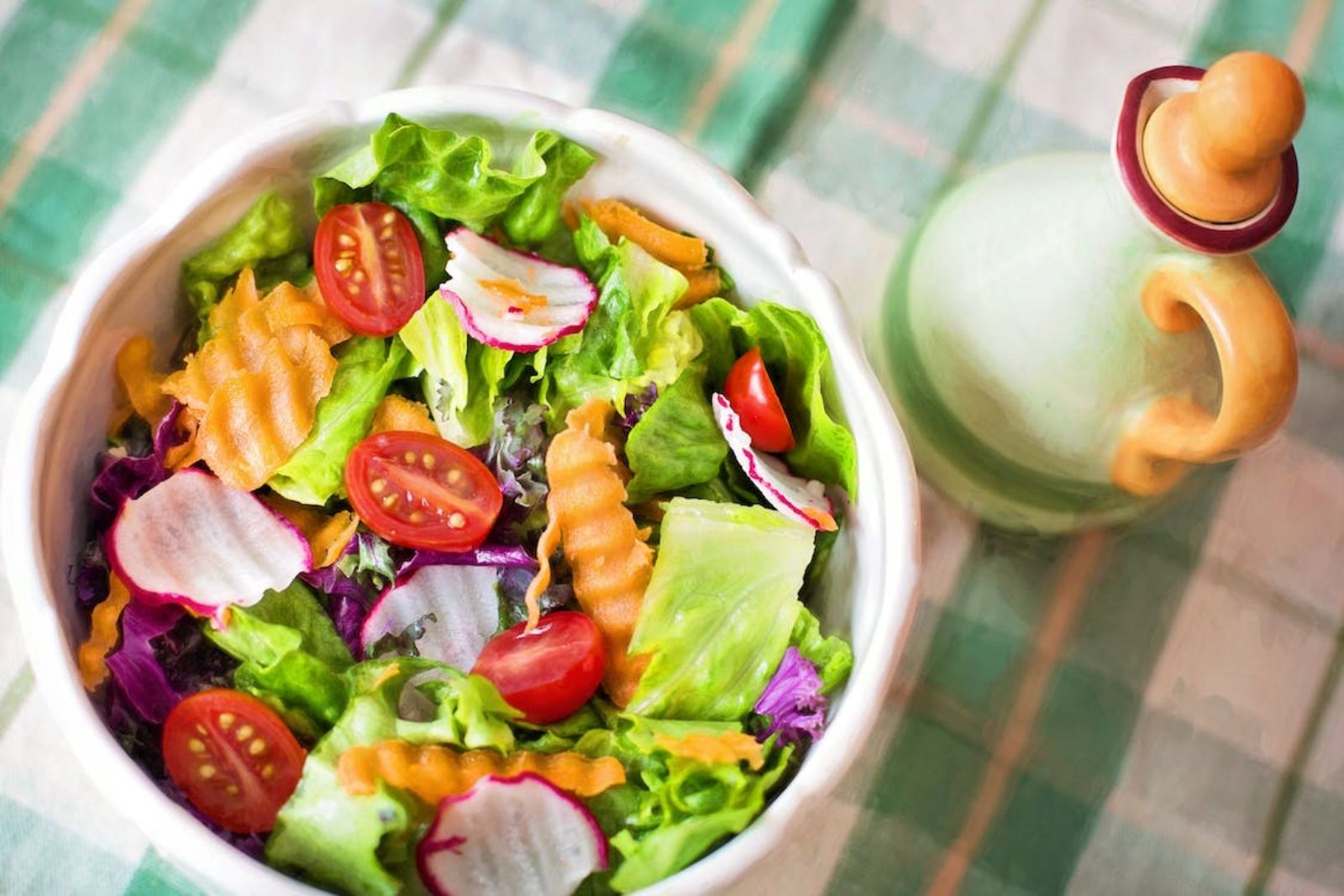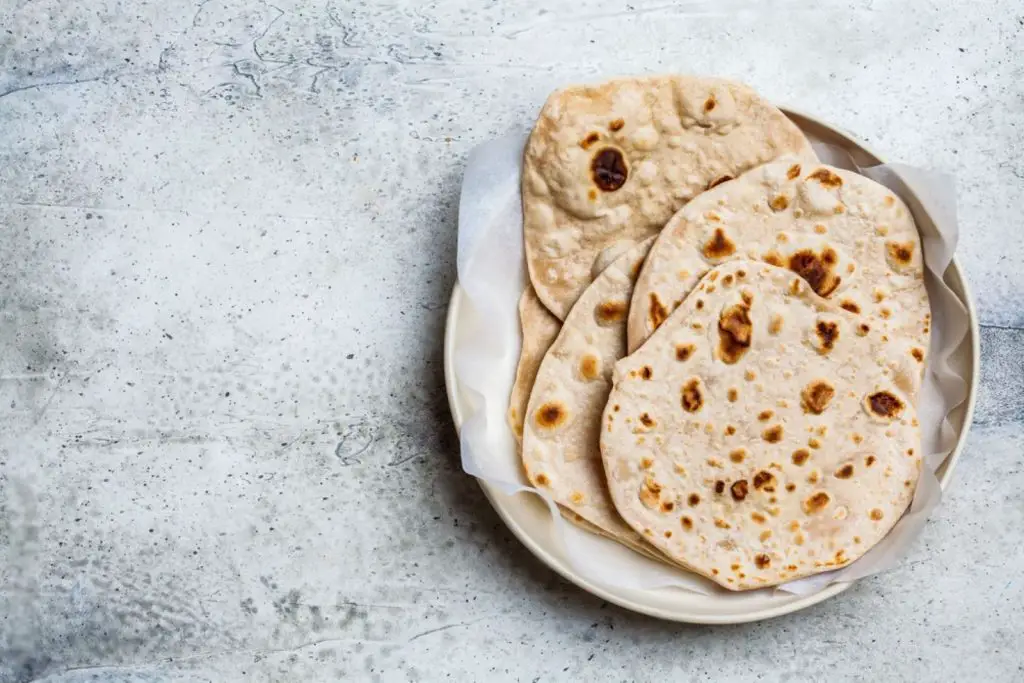
Salads are refreshing, healthy, and versatile dishes that are enjoyed by many people. Whether you have an abundance of fresh salad greens from your garden or you simply want to prepare salads in advance for convenience, freezing salad can be a great option to preserve their freshness. Freezing salad allows you to have a quick and convenient meal option whenever you desire, even when certain ingredients are out of season. By following a few simple steps, you can effectively freeze salad while maintaining its texture and flavor. In this article, we will provide a comprehensive guide on how to freeze salad to ensure its optimal quality for future enjoyment.
Here’s a guide on how to freeze salad:
Step 1: Select fresh salad greens
When freezing salad, it’s crucial to start with fresh and crisp salad greens. The quality of the greens you choose will directly impact the taste and texture of your frozen salad. Opt for varieties such as lettuce, spinach, kale, or arugula, depending on your personal preference and the type of salad you want to create.
Freshness is key when selecting salad greens. Look for vibrant, brightly colored leaves that are free from any signs of wilting, browning, or discoloration. Avoid greens that have slimy or mushy patches, as these are indications of spoilage.
Fresh greens not only contribute to the overall flavor of the salad but also retain their texture better during the freezing process. Crisp and sturdy greens like romaine lettuce or kale tend to freeze well and maintain their structure when thawed.
If you have access to a local farmer’s market or a garden, consider using freshly harvested greens. This way, you can ensure their optimal freshness and flavor.
Step 2: Wash and prepare the greens
Once you have selected fresh salad greens, it is essential to wash them thoroughly to remove any dirt, debris, or potential contaminants. Washing the greens ensures that your frozen salad remains clean and safe to consume.
To wash the salad greens, follow these steps:
- Fill a clean sink or a large bowl with cold water. Make sure there is enough water to submerge the greens fully.
- Place the greens in the water and swish them around gently. This helps loosen any dirt or particles clinging to the leaves.
- Remove the greens from the water and discard any floating debris or sediment.
- Rinse the greens under cold running water, holding them under the faucet or using a colander. Allow the water to flow over each leaf, ensuring thorough rinsing.
- Inspect the leaves for any damaged, discolored, or wilted sections. Trim off these portions using a sharp knife or kitchen shears. Removing damaged leaves helps maintain the quality of the salad and prevents any potential off-flavors.
After washing the greens, it’s important to remove excess moisture. Excess water can cause ice crystals to form during freezing, affecting the texture of the salad. There are two common methods for drying the greens:
- Pat drying: Gently lay the washed greens on a clean kitchen towel or paper towels. Lightly press another towel or paper towels on top to absorb the moisture. Be careful not to crush or bruise the delicate leaves.
- Salad spinner: Place the washed greens in a salad spinner, a kitchen tool specifically designed for removing excess water from salad greens. Spin the greens in the salad spinner until most of the water is removed.
Step 3: Prep other salad ingredients (optional)
While freezing salad greens is the primary focus, you may also include other ingredients in your frozen salad for added flavor and variety. These can include vegetables, fruits, proteins, or any other toppings or mix-ins you typically enjoy in a fresh salad.
If you choose to incorporate additional ingredients, it’s essential to prepare them as you normally would for a fresh salad. Here’s why:
- Consistency: Chopping, slicing, or dicing the ingredients ensures that they freeze and thaw uniformly. It helps maintain a consistent texture throughout the salad when it’s eventually consumed.
- Portion control: By prepping the ingredients beforehand, you can determine the right amount to include in each portion of the frozen salad. This allows for convenient meal planning and portion control when it comes time to enjoy the salad.
- Ease of serving: Prepping the ingredients in advance saves time when serving the frozen salad. You can simply thaw the desired portion and have everything ready to assemble without the need for additional preparation.
- Flavor distribution: Prepping the ingredients allows for better distribution of flavors. For example, if you’re adding sliced tomatoes or diced onions, evenly dispersing them throughout the salad ensures that every bite is balanced and flavorful.
When prepping other salad ingredients, keep in mind that some ingredients may not freeze well due to their high water content or delicate nature. Items like cucumbers, radishes, or avocados, which are prone to texture changes when frozen, are best added fresh when you’re ready to serve the salad.
Step 4: Assemble the salad
After washing, drying, and prepping the salad greens and any additional ingredients, it’s time to bring everything together and assemble your frozen salad. By combining the ingredients in a large mixing bowl and gently tossing them, you ensure that the flavors and textures are evenly distributed throughout the salad.
Here’s why assembling the salad is important:
- Flavor integration: Assembling the salad allows the flavors of the different ingredients to meld together. The act of tossing the greens with other components helps the flavors to intermingle, creating a harmonious taste experience.
- Texture balance: Combining the ingredients in a bowl and gently tossing them ensures that the textures of the salad components are well-distributed. This way, you can enjoy a balanced mix of crunchy, crisp, and tender elements in every bite.
- Even ingredient distribution: Tossing the salad ensures that each portion receives a fair distribution of the greens and other ingredients. This way, when you portion and freeze the salad, you won’t end up with clumps of certain ingredients in one serving and scarcity in another.
To assemble the salad, place the washed and dried salad greens in a large mixing bowl. Add the prepared additional ingredients, such as vegetables, fruits, or proteins, into the bowl. Gently toss everything together using salad tongs or clean hands. Be careful not to overmix or crush delicate ingredients.
Step 5: Portion the salad
Once you have assembled your salad, it’s important to portion it into individual servings or family-sized portions. This step allows for convenient thawing and serving in the future without having to defrost the entire batch at once. Here’s why portioning is beneficial:
- Easy meal planning: Portioning the salad allows you to plan your meals more efficiently. You can allocate specific portions based on your intended serving size or the number of people you are serving. This way, you can thaw only what you need, reducing waste and ensuring that the remaining salad stays frozen for future use.
- Quick and convenient serving: Portioned salads thaw more quickly and easily than a single large batch. When you’re ready to enjoy a portion, you can simply remove it from the freezer and thaw it without having to defrost the entire salad. This makes it a convenient option for a quick and healthy meal or snack.
- Customizable portions: Portioning the salad allows you to cater to individual preferences or dietary needs. You can customize each portion by adding specific toppings, dressings, or garnishes before freezing. This ensures that each serving is tailored to personal preferences, providing a variety of options for different tastes.
To portion the salad, consider using individual airtight containers, freezer-safe bags, or freezer-safe meal prep containers. Divide the assembled salad evenly among the containers, leaving some headspace to accommodate any expansion that may occur during freezing.
Step 6: Pack the salad for freezing
Once you have portioned your salad, it’s crucial to pack it properly for freezing. This step involves using appropriate freezer-safe containers or airtight resealable bags to protect the salad from freezer burn and maintain its quality during storage. Here’s why packing the salad correctly is important:
- Prevent freezer burn: Freezer burn occurs when air comes into contact with the surface of the food, leading to dehydration and the development of unappealing textures and flavors. By using airtight containers or bags and removing excess air, you can significantly reduce the risk of freezer burn and preserve the freshness of the salad.
- Maintain texture and quality: Proper packing helps maintain the texture and quality of the salad. It prevents moisture loss, which can lead to soggy or wilted greens, and helps retain the flavors and nutritional value of the ingredients.
- Space optimization: Packing the salad in containers or bags allows for efficient use of freezer space. You can stack or arrange the portions neatly, optimizing the available space and making it easier to organize your freezer.
To pack the salad for freezing:
- Choose freezer-safe containers or airtight resealable bags specifically designed for freezer storage. These should be durable, leak-proof, and able to withstand low temperatures without cracking or breaking.
- Place each portion of the salad into a separate container or bag. Fill the containers or bags, leaving some headspace to accommodate any expansion that may occur during freezing.
- If using bags, press out as much air as possible before sealing. This can be done by gently squeezing the bag while sealing it or using a vacuum sealer if available. If using containers, ensure the lids are tightly sealed to create an airtight environment.
Step 7: Label and date the packages
Properly labeling and dating the packages of your frozen salad is an important step to ensure organization, track freshness, and maintain food safety. By clearly indicating the name of the salad and the date of freezing on each container or bag, you can easily identify and manage your frozen salad inventory. Here’s why labeling and dating are crucial:
- Identification: Labeling the packages with the name of the salad allows you to quickly identify the contents without having to open each container or bag. This is especially helpful if you have multiple types of salads stored in your freezer. It saves time and minimizes any confusion when selecting the salad you want to thaw.
- Freshness tracking: By including the date of freezing on each package, you have a clear reference point to track the freshness of the salad. It helps you prioritize and consume the oldest salad portions first, ensuring that you enjoy them while they are still at their best quality.
- Food safety: Properly labeling and dating the packages promotes food safety. It allows you to monitor how long the salad has been in the freezer, ensuring that you consume it within a safe time frame. This is particularly important for maintaining the taste, texture, and nutritional value of the salad.
To label and date the packages of your frozen salad:
- Use a permanent marker or adhesive labels that are suitable for freezer use. Make sure the writing utensil or labels are water-resistant and won’t smudge or fade over time.
- Write the name of the salad clearly on each package. This can be the type of salad or a specific name if you have multiple variations stored.
- Include the date of freezing on each package. Write the month, day, and year of freezing so you can easily determine the age of the salad portions.
- Place the label or write the information in a visible and easily readable area on the container or bag. This ensures that the details are readily visible when you search for or handle the frozen salad.
Step 8: Freeze the salad
After properly packaging your salad portions, it’s time to freeze them. Freezing the salad effectively locks in its freshness and preserves its quality for an extended period. However, it’s important to follow specific guidelines to ensure optimal results. Here’s why freezing the salad correctly is essential:
- Temperature control: Freezing the salad at the appropriate temperature ensures that it freezes quickly and maintains its quality. Set your freezer to 0°F (-18°C) or below to ensure efficient freezing. This low temperature prevents the formation of large ice crystals, which can affect the texture and taste of the salad.
- Preventing squishing: Placing the containers or bags of salad in a flat position helps prevent the salad from getting squished or compressed during freezing. This ensures that the individual ingredients retain their shape and texture. Additionally, flat positioning makes it easier to stack and organize the frozen salad in your freezer.
- Air circulation: Providing sufficient space between the packages allows for proper air circulation in the freezer. Adequate airflow helps maintain a consistently low temperature and prevents freezer burn. It also allows the frozen salad to freeze evenly and maintain its quality over time.
To freeze the salad properly:
- Ensure that your freezer is set to 0°F (-18°C) or below before placing the salad packages inside.
- Arrange the containers or bags of salad in a flat position. Avoid stacking them on top of each other to prevent squeezing or crushing the salad.
- Leave some space between the packages to allow for air circulation. This can be achieved by placing the packages in a single layer or by leaving gaps between them.
- Avoid overcrowding the freezer. If necessary, freeze the salad portions in batches or use multiple shelves or areas of the freezer to provide adequate space for air circulation.
How long can I keep frozen salad in the freezer?
Salad can typically be stored in the freezer for up to 3-4 months. However, the exact duration of its freezer storage life may vary depending on various factors such as the type of salad, ingredients used, packaging method, and freezer temperature. It is recommended to consume frozen salad within 2-3 months to ensure optimal quality and freshness.
Step 9: Thaw and enjoy the salad
Once you’re ready to enjoy your frozen salad, it’s time to thaw it before serving. Thawing the salad properly ensures that it regains its desired texture and flavors. Here’s how to thaw and enjoy the salad:
- Transfer to the refrigerator: Remove the desired portion of the frozen salad from the freezer and transfer it to the refrigerator. Place it in a covered container or on a plate to prevent any cross-contamination or contact with other foods.
- Thawing time: Allow the salad to thaw in the refrigerator overnight or for a few hours, depending on the size of the portion. Thawing in the refrigerator is the safest method as it maintains the salad at a cool and consistent temperature, minimizing the risk of bacterial growth.
- Customize with dressing or toppings: After the salad has thawed, you can add your favorite dressing or toppings according to your preference. This step allows you to personalize the flavors and enhance the salad’s taste before serving. Avoid adding dressings or delicate toppings before freezing as they may affect the texture and quality of the salad.
- Mix gently: Once the salad has thawed and you’ve added the desired dressing or toppings, gently mix or toss the salad to distribute the flavors evenly. Be careful not to overmix, especially if you have delicate greens or ingredients in the salad.
Other related questions
Can I refreeze salad?
It is generally not recommended to refreeze salad once it has been thawed. Freezing and thawing salad can affect its texture, taste, and overall quality. The process of thawing and refreezing can lead to moisture loss, resulting in a soggy and less appetizing salad. It is best to consume thawed salad promptly to maintain its freshness and avoid the need for refreezing.
How do I know if the salad has gone bad after being frozen?
To determine if a frozen salad has gone bad, you should look for signs such as an off odor, significant changes in texture, or the presence of mold or discoloration. If the salad exhibits any of these indicators, it is best to discard it to prevent foodborne illnesses. Trust your senses and exercise caution when consuming frozen salad that appears to have deteriorated in quality.
Can I freeze salad dressings along with the salad?
It is generally not recommended to freeze salad dressings along with the salad. Dressings often contain ingredients like mayonnaise or dairy that may not freeze well and can result in undesirable texture changes. It is best to add dressings fresh after thawing the salad.
Can I freeze salads with creamy or delicate ingredients like avocados or cucumbers?
Creamy or delicate ingredients like avocados, cucumbers, or other watery vegetables may not freeze well and can become mushy or lose their texture. It is advisable to exclude such ingredients from the salad before freezing and add them fresh when serving.
Can I freeze salads with crispy toppings like croutons or nuts?
Crispy toppings like croutons or nuts may become soft and lose their crunchiness when frozen. It is recommended to add these toppings fresh before serving the salad. Alternatively, you can freeze the salad without the toppings and add them separately after thawing.
Can I freeze a salad with hard-boiled eggs?
Freezing a salad with hard-boiled eggs is possible, but the texture of the eggs may change upon thawing. The eggs can become slightly rubbery and lose some of their original creaminess. It is advisable to add hard-boiled eggs fresh to the salad after it has been thawed to maintain their desired texture and flavor.
Can I freeze any type of salad?
Most salads can be frozen, but certain types may freeze better than others. Leafy greens like lettuce or spinach may experience texture changes when frozen, while heartier salads with ingredients like grains or roasted vegetables tend to freeze more successfully. Consider the ingredients and their suitability for freezing before proceeding.








